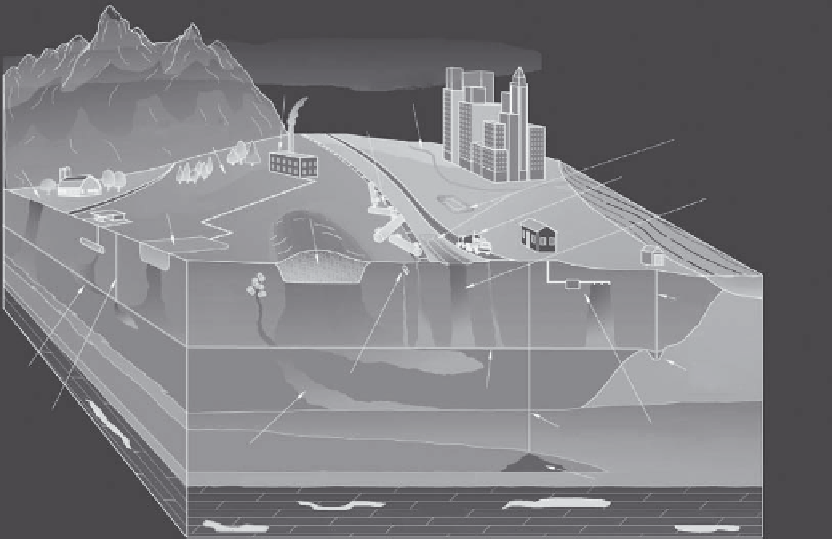Environmental Engineering Reference
In-Depth Information
• Accidents or collisions involving automobiles where gasoline and oil may be
released, railroad derailments, etc.
• Septic systems
• Sewer leaks
• Landfills and dumps
• Automobile exhaust
• Sumps and dry wells
• Former disposal lagoons
• Animal feed lots
• Injection wells
• Fertilizer application
• Application of pesticides and herbicides
• Application of deicing compounds (i.e., road salts)
Exploring and evaluating fate and transport of contaminants in the environment must
consider the complex interplay between the environment and the contaminant. And, as
Figure 8.1 shows, fate and transport is also influenced by the method and location of con-
taminant release and the volume, mass, and duration of the release. We will break down
and describe these factors influencing the migration of contaminants, degradation of con-
taminants, and then describe how the fate and transport of each group of substances is
influenced by the group's specific chemistry.
Smog
Industrial plant
Contaminated
surface water
Spills from
rail accidents
One of numerous
stormwater retention
ponds of urban runoff
Auto exhaust
Fertilizer, pesticide and
herbicide runoff
City/urban runoff
Livestock
feed lot
Seepage of con-
taminated water
from stormwater
retention ponds
Seepage lagoon
Landfill or dump
UST
Buried
drums
Pumping
well
Saltwater
Freshwater
Unconfined
aquifer
Saltwater
intrusion
LNAPL
plume
Ruptured pipeline
Water table
Drywell
Confining unit
Septic tank
and field
Injection well
DNAPL
plume
Confined aquifer
Injected contaminants
Confining unit
Bedrock
FIGURE 8.1
(See color insert.)
Sources and locations of contaminant release.

Search WWH ::

Custom Search